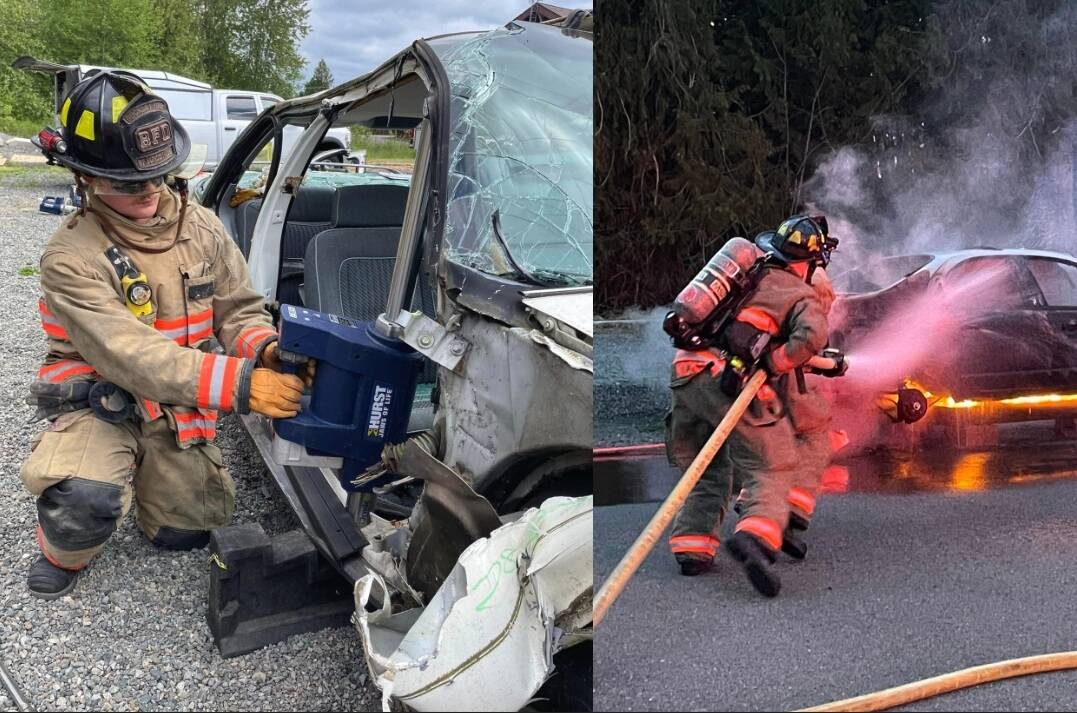A cat in a tree, a broken arm, or a fire — regardless, the fire department responds.
But whatever emergency, be it minor or major, the Buckley Fire Department needs tax dollars to respond effectively. That’s why, sometime in 2024, the BFD will be proposing to voters a levy lid lift to restore the EMS levy to 50 cents per $1,000 in assessed property value, Chief Eric Skogen said in a recent interview.
Local voters passed a permanent EMS levy in 2018 at that full 50 cent rate, but state laws mandate that agencies that collect property taxes can only collect 1% more every year than the previous. With property values more-or-less on the constant rise and Buckley’s increasing population, that means the levy rate needs to decrease over time to compensate.
“It’s gone from 50 cents down to 35 cents, and that’s due to inflation and due to the fact that we are not allowed to increase our costs more than 1% a year,” Skogen said. “That often can’t keep pace with inflation, so roughly every five to seven years, we have to go back to the voters and ask them to lift that lid back to the full amount to 50 cents.”
Skogen said this is not a new tax, but instead, they’re asking voters to reauthorize the tax to its full amount, which, if authorized by voters, will once again be 50 cents — a 15 cent increase.
Due to a growing population, Skogen said the department is seeing increased demand for services. For example, the department saw a 16% increase in calls from 2021 to 2022. At the same time, Skogen said there’s been a decrease in the department’s revenue which affects various equipment.
Skogen gave an example of a heart monitor they use that the manufacturer no longer supports. This means they can’t send it in for repairs, and instead, the department needs to replace it when it breaks.
But, at this time, Skogen said because of the decrease in revenue, it forces them to defer capital purchases such as a new heart monitor. In addition to deferring capital expenditures, he said the price of medical supplies and medication has increased with inflation as well. Skogen said these factors have made their budget even tighter than before.
“It’s not just this department, but the fire service is always forced to do more with less. Many of us pay taxes right here. No one wants to pay more, but the cost of doing business for us is increasing no different than anybody else,” Skogen said. “We never want to place a burden on the taxpayers, but taxpayers deserve a high level of service. In order to provide that, we have to continue to make sure there’s adequate funding there.”
Skogen said if the voters reauthorize the levy to its full amount, it would increase the department’s revenue, allowing them to replace aging equipment. Additionally, it could allow them to hire one more firefighter-EMT.
Currently, Buckley FD has four full-time firefighter-EMTs alongside their volunteer firefighters-EMTs, who make up 95% of the force.
Skogen said if they can hire one more full-time responder to fill the gaps at the station, it would allow them to respond to calls with more hands and decrease response time.
Staffing varies wildly at the BFD. Skogen said there are times when they have around ten staff members at the station but added other times, there might be one person at the station.
INCREASED RESPONSE TIME, CONCURRENT CALLS
Chief Skogen cited that this year to date, there has been a 40 second increase in response times over previous years. He attributes response time increase to the rise in overlapping concurrent calls; recent data showed 21% of calls are concurrent or happen at the same time
“We can likely attribute it to the rise in concurrent, overlapping calls because if we have all of our units assigned at one scene, either treating a patient or dealing with an emergency, and then we have another call, there’s a delay in either trying to break some resources free to get to the second call,” Skogen said. He added if responders can’t leave a call, aid has to come from another department, further away.
This reflects BFD’s need for more in-city volunteers, especially in Wilkeson and Carbonado, which the department also covers, Skogen said.
According to the BFD, the average response this time year to date for the city of Buckley is six minutes and one second. In contrast to that, the response time to Wilkeson is 10 minutes and 15 seconds, and the response time to Carbonado is 11 minutes and 41 seconds.
Some studies show that EMS response time to a cardiac arrest call should be just over six minutes or less for the patient’s best chance to be successfully discharged from the hospital. The optimal response time extends by a minute if there are witnesses or bystander CPR, but without civilian aid, the optimal response time shrinks to just over four minutes. 76% of BFD calls are EMS-related, so more often than not, they’re responding to someone who needs medical attention.


